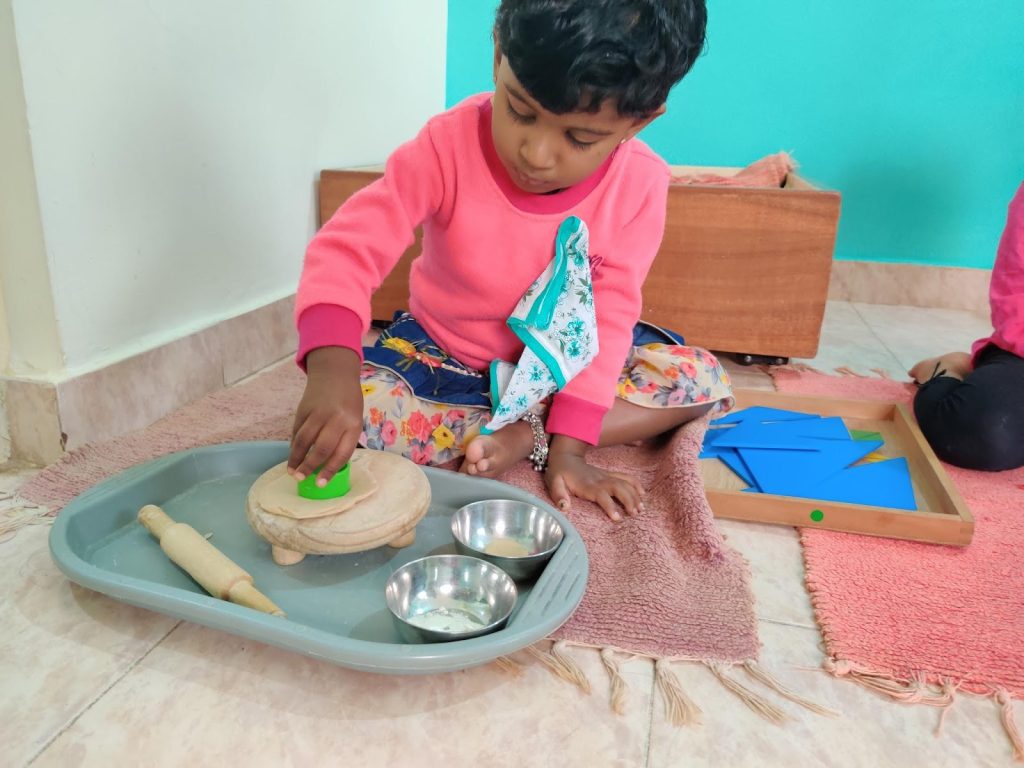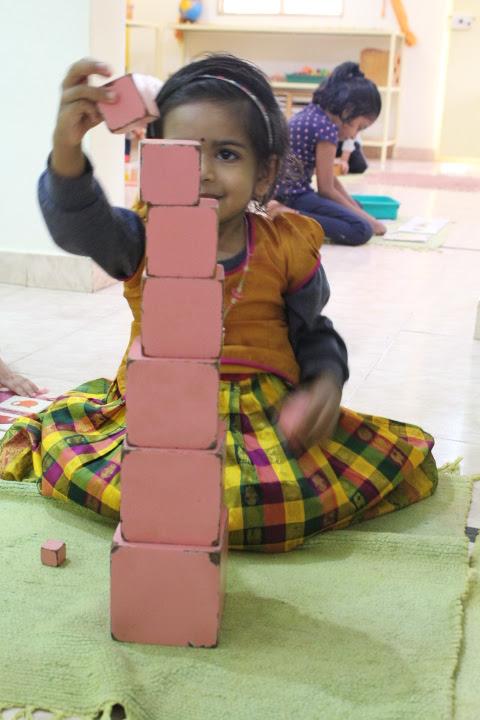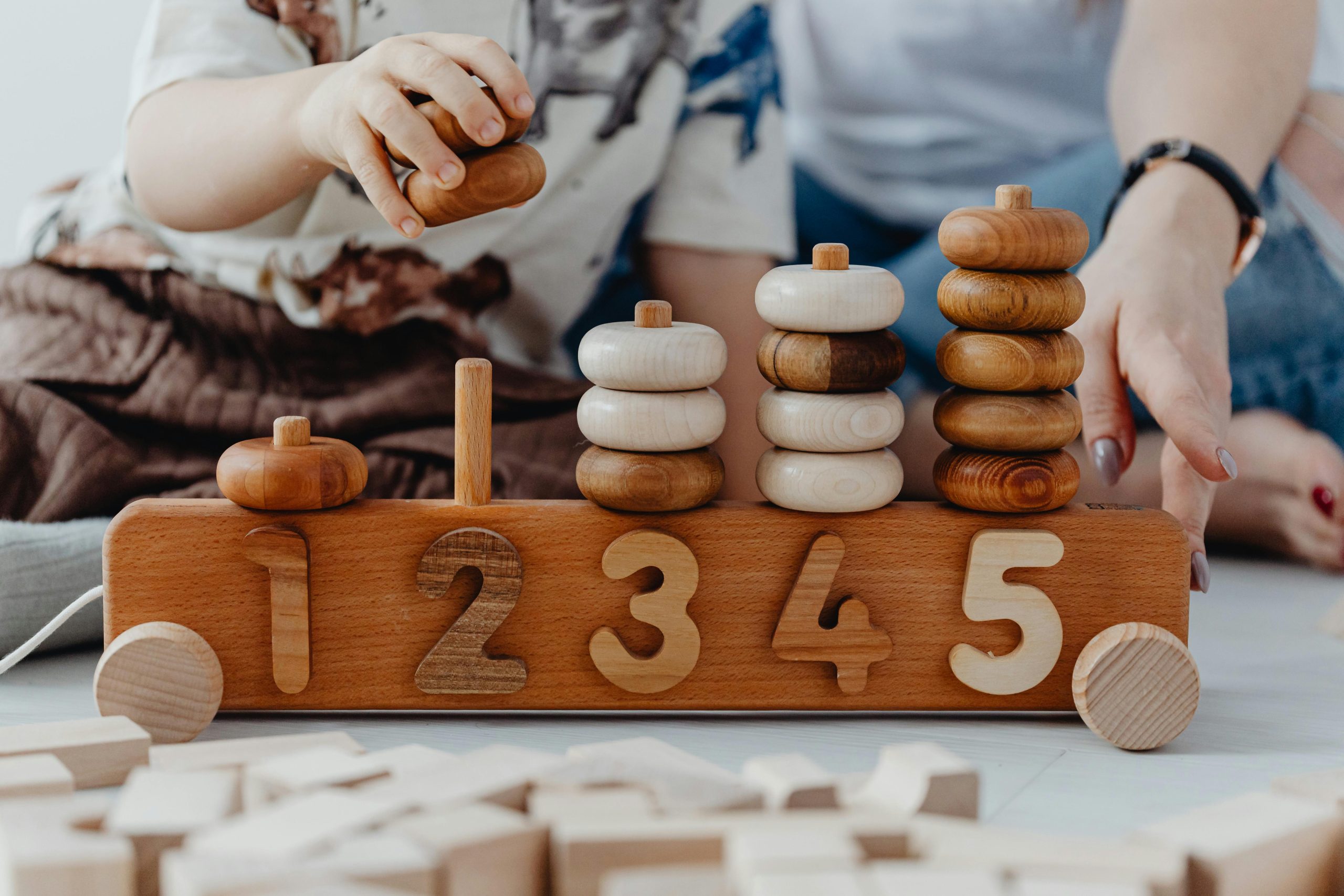Montessori Materials – Learning Through Experience
Montessori Materials – Learning Through Experience
Getting to know the importance of Montessori materials in the Montessori environment
The Montessori pedagogy hinges on the materials used in a Montessori classroom and how they are presented to the child. These materials are the backbone of this philosophy and the thought that has gone into their design is remarkable. Through years of observation and practice Dr.Maria Montessori designed specific materials for each area of learning in the Montessori classroom. These materials have been designed so that they are visually appealing and easy to handle for a preschooler. We will try to get a better understanding of how unique they are by exploring the materials in each sphere of activity in a Montessori classroom.
Also read: History of Montessori Education
Exercises of Practical Life (EPL)
The activities in this area focus on everyday tasks that children have usually seen adults performing in their home environment. These include pouring, folding clothes, washing, polishing, etc. The materials here are usually bright steel and brass vessels, cloth napkins for folding, cutting boards, rolling board pins, etc.
It’s interesting to see how children automatically gravitate to this area the first time they enter a Montessori environment. Activities in this area are the first to be offered to the preschooler who is new to the Montessori environment. This is because many of the materials here look familiar to the child and satisfy their innate need to imitate. These presentations and the subsequent practice of the same by the child build focus and refine the fine and gross motor skills of the child.
For example, pouring a liquid from a bigger vessel to a smaller vessel- requires control of movement, the ability to gauge when to stop pouring, and concentration to avoid spillage. It also emphasizes the importance of cleaning up after the activity. These activities instill a sense of independence in the child. They also make the child learn to take care of things around them and be more organised. To give another example, fastening frames are used to give the child presentations on how to button and unbutton clothes, how to tie a bow, how to buckle a belt, etc.

Sensorial Development Materials
The purpose of sensorial materials in a Montessori classroom is to help in differentiating, classifying, and grading based on the impressions given by the different senses. This area of the Montessori classroom stands apart for the colourful, visually appealing materials, many of which are iconic in their representation of the Montessori method. The pink tower, cylinder blocks, red rods, brown stairs, colour tablets- are just a few of the materials that one associates immediately with a Montessori classroom.
The sensorial materials are designed to instill an understanding of shapes, dimensions, colours, and textures of objects in the world around the preschooler. Some of these materials introduce subtleties in taste and smell too. Sensorial materials also act as a stepping stone to the world of geometry and subsequently lay the foundation for mathematics. Materials like the binomial and trinomial cubes are often used in higher grades to help children understand algebraic expressions.

Language Development Materials
Introduction to this area in a Montessori curriculum starts from the time the child starts school. Vocabulary building through naming objects and pictures and storytelling lays the foundation for language development.
Alphabets are taught phonetically in a Montessori environment. One of the fundamental tenets of Montessori philosophy is that the child understands a concept better if multiple senses come into play when the concept is introduced. Unlike traditional schools that mainly rely on audio-visual cues, in a Montessori environment there is extensive use of tactile impressions and muscular memory. When alphabets are introduced the child learns the sound while tracing the alphabet with their fingers.
Once the child is fairly proficient in recognising sounds and matching them to the respective symbol they move on to word building and reading. Then there are materials like the movable alphabet and the vowel boxes that the child uses to step into the world of writing and reading. Again the speciality of the Montessori materials lies in the fact that they are structured and segregated in subtle ways to leave an impression on the child’s psyche. For example, the vowels are always coloured blue and the consonants are colored pink helping the child subconsciously register the differences.
Once they are fairly proficient in reading the next step is to introduce grammar. Here again, rather than present the various parts of speech as abstract concepts there are physical shapes associated with each of them. The grammar material is fascinating in the way it helps the child in the Montessori environment delve deeper into the intricacies of the structure of the language.
Also read: This Is How Montessori Helps Your Child Grow
Numerical Development Materials
If one were to pick a favorite area of activity based on the sheer variety and volume of materials at the child’s disposal the math curriculum in a Montessori environment will probably sneak ahead of the others (disclaimer – this is purely this author’s perspective and not a fact). Not to take away from all the other fascinating materials at the preschooler’s disposal but the materials in this area stand out for the ingenuity with which they elucidate abstract concepts.
Math is a dreaded area of study for many children because of the abstract nature of the subject. In the Montessori environment, the emphasis is to move from the concrete to the abstract. Before the numerical symbols are introduced the child learns to grade quantities from big to small. This establishes an understanding of differences in quantities. Only after this are the numerical symbols or numbers introduced. The child learns to count and grade before working with the numbers. The spindle boxes introduce the concept of zero as the absence of quantity. The golden beads are used to introduce the decimal system and hierarchies in numbers. The number cards for each hierarchy are coloured differently. Once the child understands the different hierarchies he/she can make numbers and match them to the quantities.
The four operations in math – addition, subtraction, multiplication, and division are also taught with the help of materials. From the addition and subtraction strip boards to the multiplication and division boards with beads to the stamp game there is a fascinating variety of materials to pique the interest of the child in this subject. The beauty of introducing these seemingly complex subjects at such an early stage of learning is that it familiarizes the preschooler with them and softens the aura of difficulty associated with math.
Cultural Development Materials
This area focuses on general knowledge outside the core subjects. The materials in this area introduce the child to botany, zoology, geography, etc. The knowledge that is traditionally gathered from books at a later stage of schooling is available in the Montessori classroom in the form of materials that the child gets to see in a three-dimensional form and manipulate by hand.
For example, landforms and how they differ in their proximity to a water body are beautifully shown with the aid of open wooden boxes. Here the landform (coloured brown) projects above the bottom which is coloured blue to represent water. When the presentation is made to the child, say to show what an island is, one pours water into the box and it is immediately clear that an island is a landform that is surrounded by a water body from all sides. Similarly, the botany cabinet isolates leaves of different shapes and names them.
Montessori materials can very easily be categorized as toys mainly because of the age group they are used for. If toys are defined as objects of play that engage the child in a way that he/she finds enjoyable, the Montessori environment is filled with ‘toys’ that engage, educate, and give joy to the player. These materials are designed to isolate a concept and educate the user. By including the seemingly simple act of manipulating the material by hand to reinforce a concept Dr.Montessori revolutionized learning for little children.





